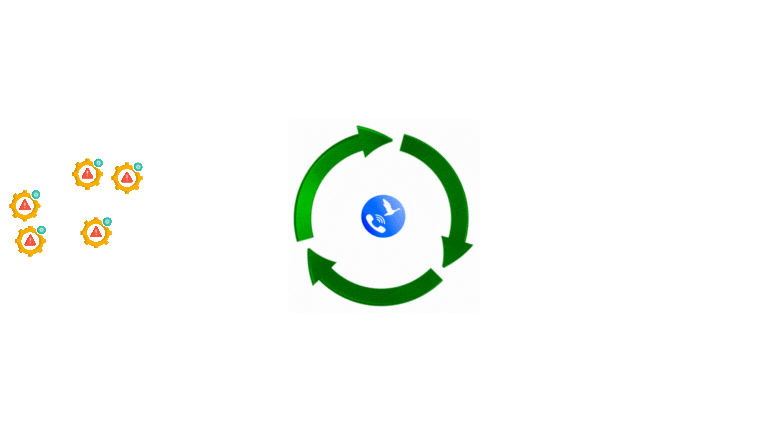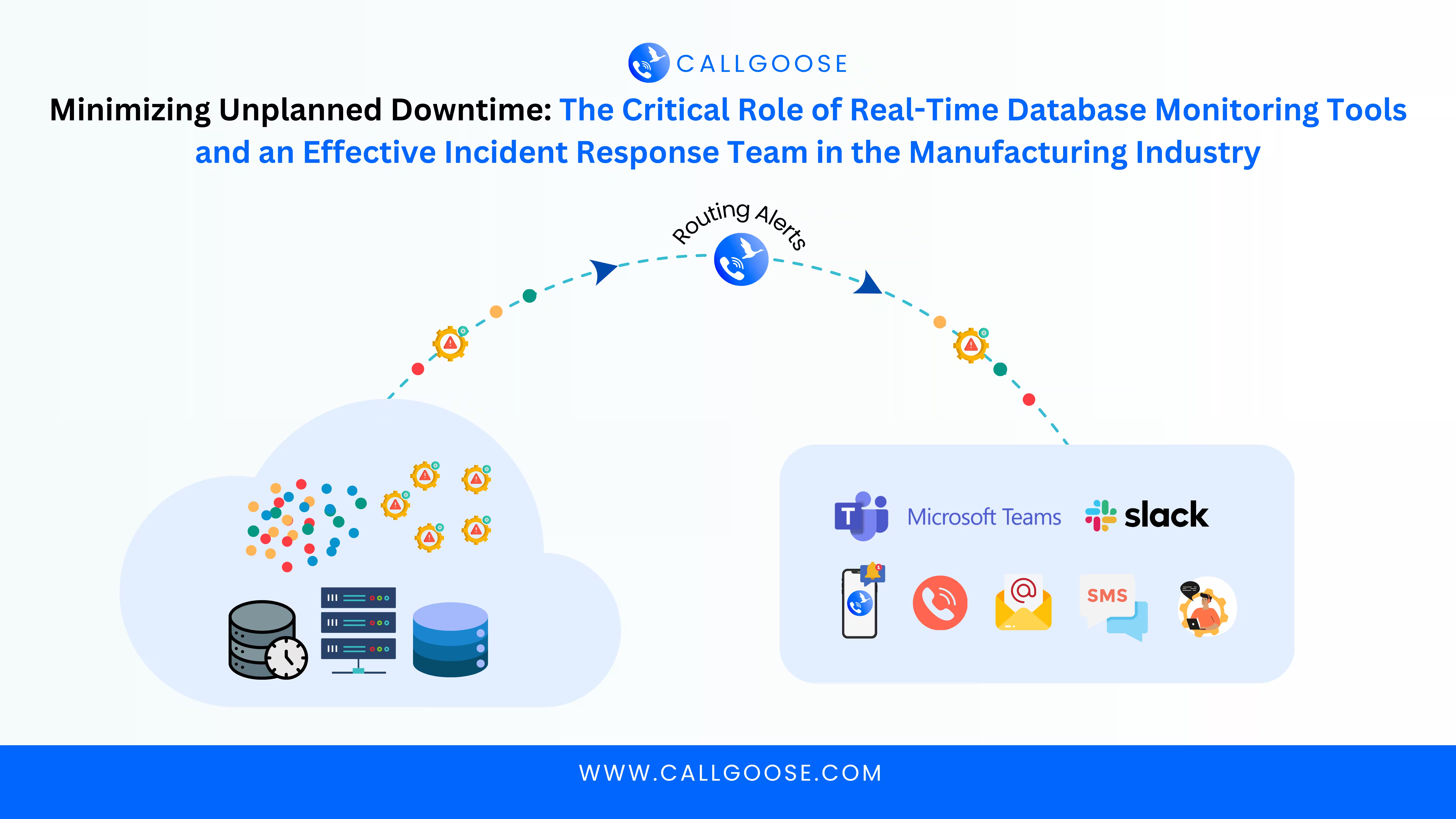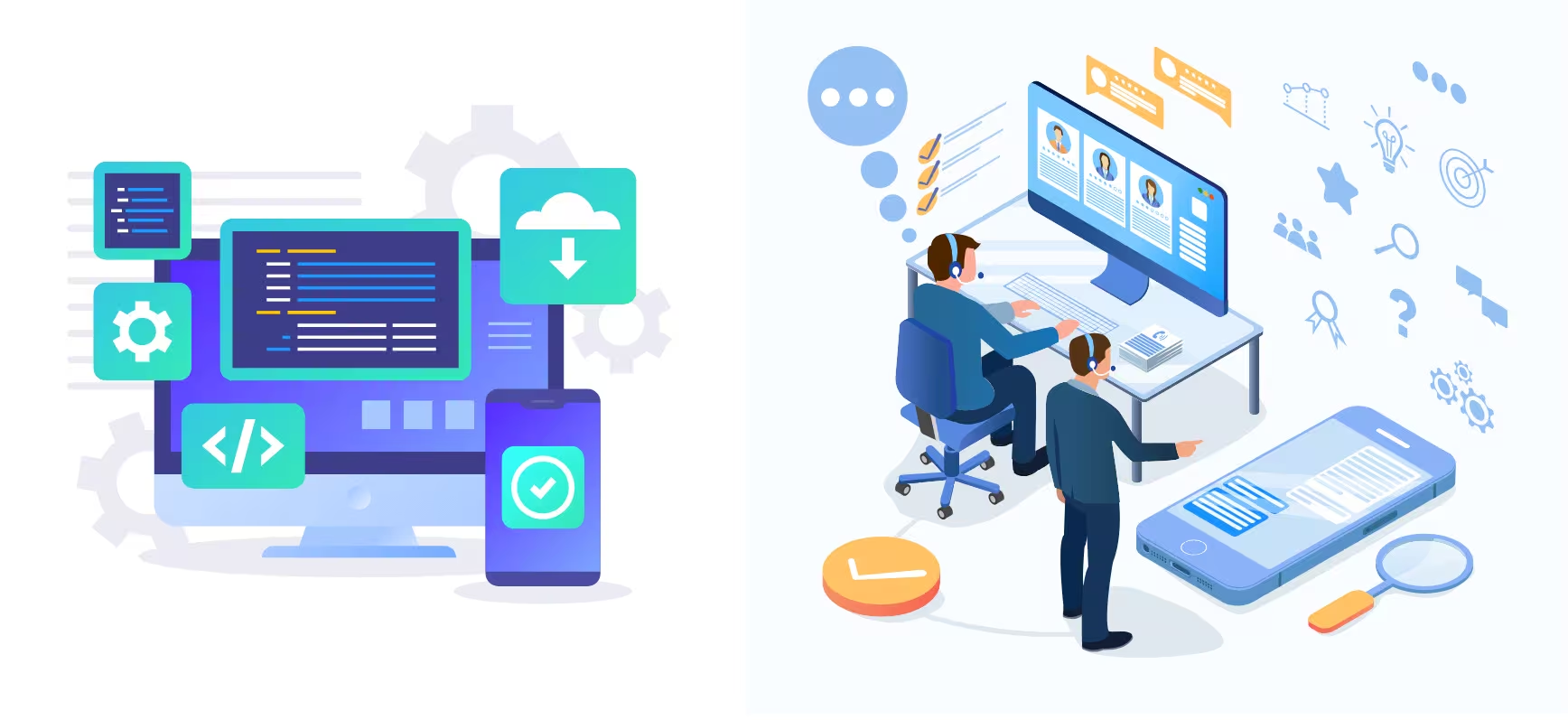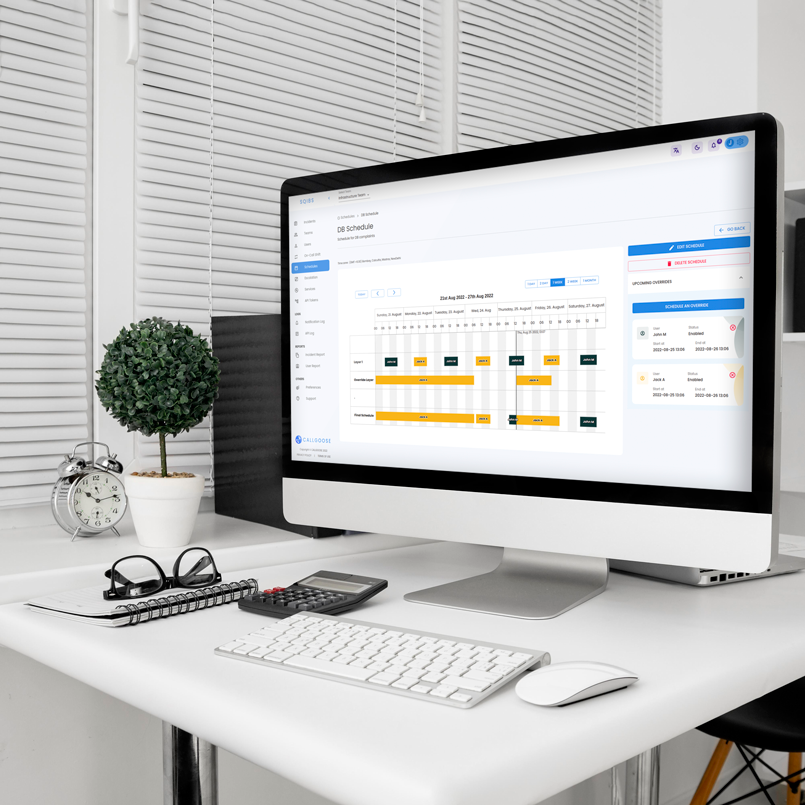
CALLGOOSE

CALLGOOSE
BLOG
12 September 2024 | Tony Philip
5 Minute Read
As organizations increasingly rely on technology to power their business operations, ensuring that systems remain highly available, reliable, and resilient is of paramount importance. In this context, Site Reliability Engineering (SRE) has become a fundamental discipline. The role of an SRE team is to manage and improve system performance, ensure seamless service availability, and reduce the impact of incidents when they occur. Through best practices in monitoring, automation, and incident response, SRE teams enable organizations to meet demanding service level objectives (SLOs) and minimize downtime.
One of the key factors in achieving these goals is through the use of critical system metrics and automated incident response. These practices not only reduce manual error but also significantly decrease the mean time to recovery (MTTR), ultimately ensuring system uptime and operational efficiency.
To maintain high availability, SRE teams need to monitor critical system metrics proactively. These metrics—such as CPU usage, memory consumption, disk space, response time, and error rates—provide insights into the health and performance of systems. A well-configured monitoring system ensures that teams are alerted to potential issues before they escalate into major incidents.
Key metrics that SRE teams focus on include:
By continually tracking these metrics, teams can prevent incidents, adjust system performance proactively, and make informed decisions regarding the scaling of resources.
The ability to quickly and efficiently respond to incidents is one of the most important aspects of SRE. Automated incident response minimizes the time it takes to identify, escalate, and resolve incidents, thereby reducing MTTR. Manual responses can introduce human error, delays, and inconsistency in how incidents are handled. Automating repetitive and time-sensitive tasks ensures that incidents are addressed in real-time, reducing system downtime.
Automated incident response typically involves:
Several tools, such as Callgoose SQIBS, offer comprehensive automation platforms that SRE teams can leverage to enhance their incident response capabilities.
Callgoose SQIBS is a powerful platform that enables organizations to streamline their incident management and response processes, enhancing overall system resilience and reliability. It offers a suite of automation features designed to reduce manual intervention, ensure quick recovery, and empower SRE teams with advanced tools for incident management. With Callgoose SQIBS, teams can:
Incident Auto Remediation:

Event-Driven Automation:
 Moreover, Callgoose SQIBS integrates seamlessly with popular collaboration platforms like Slack and Microsoft Teams, allowing SRE teams to acknowledge, escalate, and resolve incidents directly within their communication tools. This reduces friction and speeds up the incident resolution process.
Moreover, Callgoose SQIBS integrates seamlessly with popular collaboration platforms like Slack and Microsoft Teams, allowing SRE teams to acknowledge, escalate, and resolve incidents directly within their communication tools. This reduces friction and speeds up the incident resolution process.
By implementing event-driven automation workflows using Callgoose SQIBS, organizations can create a robust incident management system that proactively addresses system issues, improving overall reliability and efficiency in IT operations.
In today’s digital economy, system reliability and availability are critical to an organization’s success. SRE teams play a crucial role in ensuring systems run smoothly, and their ability to monitor critical metrics and implement automated incident response systems is key to minimizing downtime and improving service performance. By leveraging cutting-edge platforms like Callgoose SQIBS, SRE teams can optimize their incident response processes, reduce MTTR, and ultimately enhance system availability.
With a solid focus on automation, continuous monitoring, and a proactive approach to incident management, organizations can ensure that their systems remain resilient, responsive, and highly available, allowing them to meet both business and customer demands with confidence.
Refer to Callgoose SQIBS Incident Management and Callgoose SQIBS Automation for more details.
Callgoose SQIBS is a cutting-edge automation platform designed to elevate your organization’s resilience, reliability, and operational efficiency. With powerful On-Call scheduling, real-time Incident Management, and Incident Response capabilities, it ensures your systems are always on and responsive. Whether you need Process Automation, Runbook Automation, Incident Auto-remediation, IT request automation, or Event-Driven Automation, Callgoose SQIBS empowers you with comprehensive solutions. Stay connected and in control with notifications via Mobile App (Android, iPhone), Email, SMS, Phone Calls in over 30+ languages across 200+ countries, and seamless integrations with Slack & Microsoft Teams. Empower your team to trigger, acknowledge, and resolve incidents directly from Slack & Microsoft Teams.

BLOG
5m Read
Minimizing Unplanned Downtime: The Critical Role of Real-Time Database Monitoring Tools and an Effective Incident Response Team in the Manufacturing Industry
25 September 2024
|
James David
In the fast-paced world of manufacturing, unplanned downtime is one of the most significant threats to operational efficiency and profitability. A study highlighted by Forbes in “Unplanned Downtime Co...


BLOG
5m Read
How Callgoose SQIBS Benefits Your Software Development and IT Consulting Firm
15 February 2025
|
Tony Philip
Introduction Software development and IT consulting firms face ongoing challenges in maintaining development environments, IT infrastructure, and operational efficiency. Many tasks are manually repeti...

CALLGOOSE
SQIBS
Advanced Automation platform with effective On-Call schedule, real-time Incident Management and Incident Response capabilities that keep your organization more resilient, reliable, and always on
Callgoose SQIBS can Integrate with any applications or tools you use. It can be monitoring, ticketing, ITSM, log management, error tracking, ChatOps, collaboration tools or any applications
Callgoose providing the Plans with Unique features and advanced features for every business needs at the most affordable price.
Unique Features